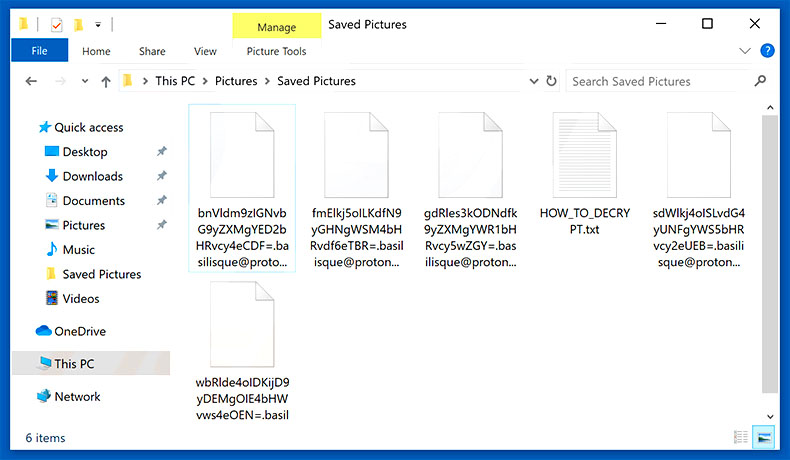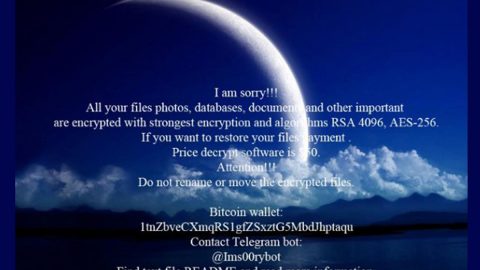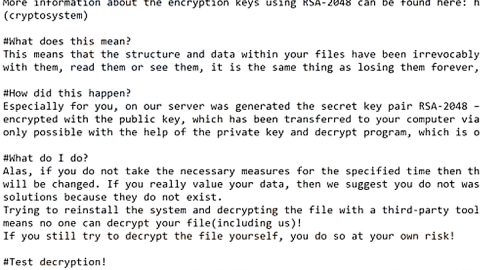What is Basilisque ransomware? And how does it carry out its attack?

Basilisque ransomware is a file-encrypting malware designed to lock important data in a targeted computer. It uses random strings and a “.basilisque@protonmail_com” extension in marking the files it encodes. This new threat is the same as other typical ransomware infection which means that it carries out its attack in the usual way other ransomware threats does.
Once it carries out its attack, Basilisque ransomware will drop its malicious payload in the system. Upon the execution of the payload file, Basilisque ransomware will connect the infected computer to a remote server controlled by the attackers. After establishing a connection, it makes modifications in the Windows Registry so that it can run on every system boot. It also downloads additional malicious files in the system folders. These files along with the data gathered about the system and the user are then used for stealth protection which allows the crypto-malware to execute its attack without any interruption from any security programs.
After the system modifications, Basilisque ransomware will start encrypting its targeted files using the AES 128 encryption algorithm. Following data encryption, it adds .Basilisque suffix to each one of the encrypted files and releases its ransom note, HOW_TO_DECRYPT.txt, which contains a quite lengthy message. Here are some parts of its ransom note:
“What happened to your files?
All of your files were protected by a strong encryption with AES CBC-128 using Basilisque Locker!
What does this mean?
This means that the structure and data within your files have been irrevocably changed,
you will not be able to work with them, read them or see them,
it is the same thing as losing them forever, but with our help, you can restore them.
The encryption key and ID are unique to your computer, so you are guaranteed to be able to return your files.
Your unique id: 37c3b87fb83c71471559d3ff73b72***
Date of encrypt: Sunday, June 16, 2019, 5:29:31 PM UTC
What do I do?
You can buy a decryptor from us!
How much is it?
In the first 24 hours after encryption – 100$
In three days – 150$
In 12 days – 250$
After(if it is still possible*) – 500$
But if you want to decrypt few files as a test check the price will be increased by $ 25 for every single file. (This is described in more detail below in FAQ p.3)
*We can delete keys as time passes.”
How does Basilisque ransomware spread online?
Basilisque ransomware may spread using several tactics. For one, it may use malicious spam email campaigns which contain an infected attachment. Aside from that, it could also break through unprotected RDP configuration and install Basilisque ransomware directly in the system. In addition, crooks could also spread this crypto-malware using fraudulent downloads, exploit kits, fake software, and fake software updates. This is why you need to keep both your system and antivirus programs updated in order to keep your computer safe from this kind of cyber threat.
Eliminate Basilisque ransomware from your computer by following the removal steps provided below and the advanced steps that follow.
Step_1: First, you have to stop the malicious process of Basilisque ransomware by opening the Task Manager. To do that, simply tap Ctrl + Shift + Esc keys on your keyboard.
Step_2: Under the Task Manager, switch to the Processes tab and find the suspicious-looking process that takes up most of your CPU’s resources and is most likely related to Basilisque ransomware.
Step_3: After that, close the Task Manager.
Step_4: Tap Win + R, type in appwiz.cpl and click OK or tap Enter to open Programs and Features under Control Panel.
Step_5: Under the list of installed programs, look for Basilisque ransomware or anything similar and then uninstall it.
Step_6: Next, close the Control Panel and tap Win + E keys to launch File Explorer.
Step_7: Navigate to the following locations below and look for Basilisque ransomware’s malicious components such as HOW_TO_DECRYPT.txt and [random].exe as well as other suspicious files, then delete all of them.
- %TEMP%
- %WINDIR%\System32\Tasks
- %APPDATA%\Microsoft\Windows\Templates\
- %USERPROFILE%\Downloads
- %USERPROFILE%\Desktop
Step_8: Close the File Explorer.
Before you proceed to the next steps below, make sure that you are tech-savvy enough to the point where you know exactly how to use and navigate your computer’s Registry. Keep in mind that any changes you make will highly impact your computer. To save you trouble and time, you can just use Restoro, this system tool is proven to be safe and excellent enough that hackers won’t be able to hack into it. But if you can manage Windows Registry well, then by all means go on to the next steps.
Step_9: Tap Win + R to open Run and then type in Regedit in the field and tap enter to pull up Windows Registry.
Step_10: Navigate to the following path:
- HKEY_CURRENT_USER\Control Panel\Desktop\
- HKEY_USERS\.DEFAULT\Control Panel\Desktop\
- HKEY_LOCAL_MACHINE\Software\Microsoft\Windows\CurrentVersion\Run
- HKEY_CURRENT_USER\Software\Microsoft\Windows\CurrentVersion\Run
- HKEY_LOCAL_MACHINE\Software\Microsoft\Windows\CurrentVersion\RunOnce
- HKEY_CURRENT_USER\Software\Microsoft\Windows\CurrentVersion\RunOnce
Step_11: Delete the registry keys and sub-keys created by Basilisque ransomware.
Step_12: Close the Registry Editor and empty the Recycle Bin.
Try to recover your encrypted files using the Shadow Volume copies
Restoring your encrypted files using Windows Previous Versions feature will only be effective if Basilisque ransomware hasn’t deleted the shadow copies of your files. But still, this is one of the best and free methods there is, so it’s definitely worth a shot.
To restore the encrypted file, right-click on it and select Properties, a new window will pop up, then proceed to Previous Versions. It will load the file’s previous version before it was modified. After it loads, select any of the previous versions displayed on the list like the one in the illustration below. And then click the Restore button.
Congratulations, you have just removed Basilisque Ransomware in Windows 10 all by yourself. If you would like to read more helpful articles and tips about various software and hardware visit fixmypcfree.com daily.
Now that’s how you remove Basilisque Ransomware in Windows 10 on a computer. On the other hand, if your computer is going through some system-related issues that have to get fixed, there is a one-click solution known as Restoro you could check out to resolve them.
This program is a useful tool that could repair corrupted registries and optimize your PC’s overall performance. Aside from that, it also cleans out your computer for any junk or corrupted files that help you eliminate any unwanted files from your system. This is basically a solution that’s within your grasp with just a click. It’s easy to use as it is user-friendly. For a complete set of instructions in downloading and using it, refer to the steps below
Perform a full system scan using Restoro. To do so, follow the instructions below.













